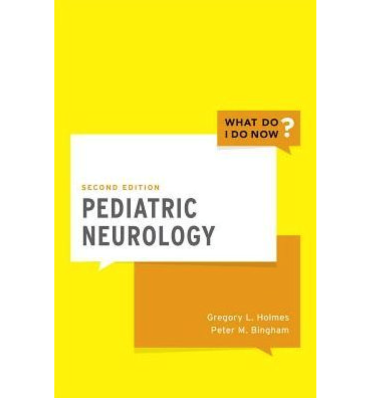Pediatric Neurology, 2nd Edition
by Gregory L. Holmes, MD and Peter M. Bingham, MD-
Paperback
$45.15
Part of the "What Do I Do Now?" series, Pediatric Neurology uses a case-based approach to cover common and important topics in the diagnosis and treatment of neurologic conditions in children. Each chapter provides a discussion of the diagnosis, key points to remember, and selected references for further reading. For this edition, the table of contents has been reorganized, and all cases and references have been updated. New cases have been added including: Charcot Marie Tooth, NMDA Receptor AB Encephalopathy, Guillain Barre Syndrome, Transverse Myelitis, Tics/Tourette Syndrome, Conversion Disorder, Chronic Daily Headache, and Chiari I Malformation. Pediatric Neurology is an engaging collection of thought-provoking cases which clinicians can utilize when they encounter difficult patients. The volume is also a self-assessment tool that tests the reader's ability to answer the question, "What do I do now?"
Reviewer:This is a unique and valuable resource for clinicians and trainees. The author discusses common and important disease entities. Two other books in the field represent different approaches to the subject. Pediatric Neurology: Principles and Practice, 4th edition, Swaiman et al. (Elsevier, 2006), is a comprehensive textbook of over 2,000 pages that includes sections on compiling a history and performing a physical exam as well as detailed information on neurological conditions in children. In Clinical Pediatric Neurology: A Signs and Symptoms Approach, 6th edition, Fenichel (Elsevier, 2009), another comprehensive textbook, the chapters are categorized by symptoms. The case-based approach of Pediatric Neurology is unique. This is an excellent introductory book presented in an easy to understand format. It is brief enough that a busy medical student or resident can be expected to read the complete book in a reasonable amount of time.
Purpose:This concise book on pediatric neurology presents 29 case-based chapters that consist of a clinical scenario, followed by a differential diagnosis, definitive diagnosis, and a discussion of key features.
Audience: It is intended to be a brief snapshot of conditions clinicians may encounter in practice, not a comprehensive review of pediatric neurology. For this reason, the rare and uncommon conditions are excluded. The book is clear and concise and will be a valuable resource.
Features: Designed for clinicians and trainees who are not specialists in pediatric neurology, the book is aimed at pediatricians, family practitioners, adult neurologists, medical students, and nurse practitioners, particularly in regions where a pediatric neurology consultation is not readily available. It will be especially helpful as a brief introduction for medical students and adult neurology residents who will be completing rotations in pediatric neurology. As a pediatric neurologist who has been practicing for over 30 years, Dr. Gregory Holmes is able highlight the salient features of each case.
Assessment: Each of the 29 case-based chapters is three to five pages long and begins with a clinical scenario. The author formulates a differential diagnosis and discusses diagnostic tests. He then arrives at a definitive diagnosis and discusses the key features and how they pertain to the clinical scenario. The key features are also summarized in a brief table at the end of each chapter along with a list of references for further reading. A major strength of this book is that it is concise. The information is often presented as tables or illustrations. Whenever appropriate, an EEG is also pictured. The chapter on breath-holding spells/pallid infantile syncope is especially well done, with a table outlining the features of conditions in the differential diagnosis. The subject areas are varied and include a mixture of common and less common entities. The book is not intended to be a standalone, comprehensive textbook. As a study book for trainees, it may have been more helpful to title chapters with the presenting complaint, which would avoid giving away the diagnosis at the beginning of the chapter. For example, the tethered cord chapter could have been titled "Gait Difficulties," and the Moyamoya disease chapter could have been titled "Transient Left-Sided Weakness." The status epilepticus chapter could have used a flowchart with the treatment algorithm.


